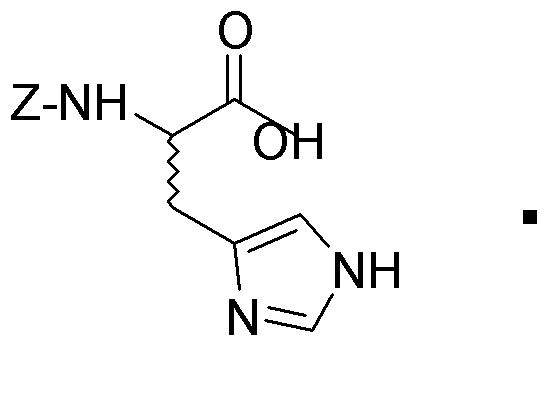Na-Z-DL-histidine is widely utilized in research focused on:
- Biochemical Research: This compound serves as a vital building block in the synthesis of peptides and proteins, aiding researchers in studying enzyme functions and protein interactions.
- Pharmaceutical Development: It plays a crucial role in drug formulation, particularly in creating medications that target neurological disorders, enhancing therapeutic efficacy.
- Nutritional Supplements: Commonly used in dietary supplements, it supports muscle recovery and immune function, making it popular among athletes and health-conscious individuals.
- Diagnostic Applications: Employed in various diagnostic assays, it helps in the detection of specific biomarkers, improving the accuracy of medical tests.
- Cosmetic Formulations: Its antioxidant properties make it a valuable ingredient in skincare products, promoting skin health and reducing signs of aging.
General Information
Properties
Safety and Regulations
Applications
Na-Z-DL-histidine is widely utilized in research focused on:
- Biochemical Research: This compound serves as a vital building block in the synthesis of peptides and proteins, aiding researchers in studying enzyme functions and protein interactions.
- Pharmaceutical Development: It plays a crucial role in drug formulation, particularly in creating medications that target neurological disorders, enhancing therapeutic efficacy.
- Nutritional Supplements: Commonly used in dietary supplements, it supports muscle recovery and immune function, making it popular among athletes and health-conscious individuals.
- Diagnostic Applications: Employed in various diagnostic assays, it helps in the detection of specific biomarkers, improving the accuracy of medical tests.
- Cosmetic Formulations: Its antioxidant properties make it a valuable ingredient in skincare products, promoting skin health and reducing signs of aging.
Documents
Safety Data Sheets (SDS)
The SDS provides comprehensive safety information on handling, storage, and disposal of the product.
Product Specification (PS)
The PS provides a comprehensive breakdown of the product’s properties, including chemical composition, physical state, purity, and storage requirements. It also details acceptable quality ranges and the product's intended applications.
Certificates of Analysis (COA)
Search for Certificates of Analysis (COA) by entering the products Lot Number. Lot and Batch Numbers can be found on a product’s label following the words ‘Lot’ or ‘Batch’.
*Catalog Number
*Lot Number
Certificates Of Origin (COO)
This COO confirms the country where the product was manufactured, and also details the materials and components used in it and whether it is derived from natural, synthetic, or other specific sources. This certificate may be required for customs, trade, and regulatory compliance.
*Catalog Number
*Lot Number
Safety Data Sheets (SDS)
The SDS provides comprehensive safety information on handling, storage, and disposal of the product.
DownloadProduct Specification (PS)
The PS provides a comprehensive breakdown of the product’s properties, including chemical composition, physical state, purity, and storage requirements. It also details acceptable quality ranges and the product's intended applications.
DownloadCertificates of Analysis (COA)
Search for Certificates of Analysis (COA) by entering the products Lot Number. Lot and Batch Numbers can be found on a product’s label following the words ‘Lot’ or ‘Batch’.
*Catalog Number
*Lot Number
Certificates Of Origin (COO)
This COO confirms the country where the product was manufactured, and also details the materials and components used in it and whether it is derived from natural, synthetic, or other specific sources. This certificate may be required for customs, trade, and regulatory compliance.


